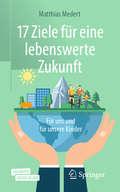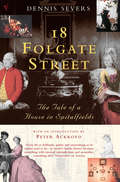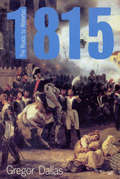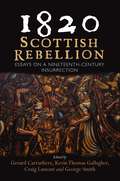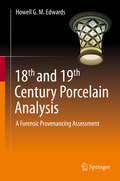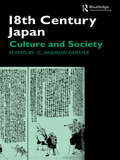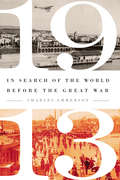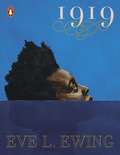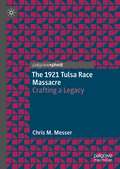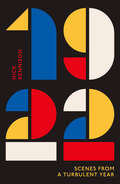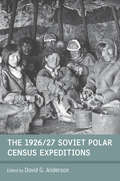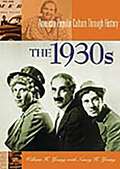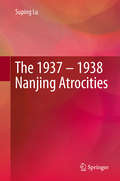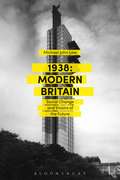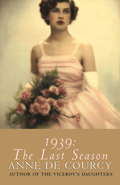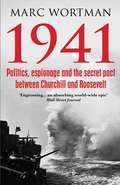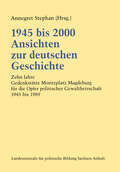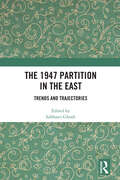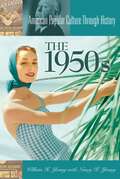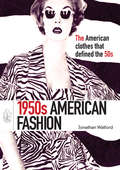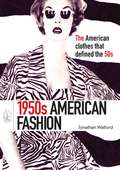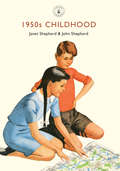- Table View
- List View
17 Ziele für eine lebenswerte Zukunft: Für uns und für unsere Kinder
by Matthias MedertVielleicht machst auch du dir Sorgen darüber, wohin die vielen ökologischen und sozialen Probleme führen werden, von welcher Art und Ausmaß die Konsequenzen sein können und wie diese das Leben von Menschen betreffen werden? Dann könnte dieses Buch interessant für Dich sein: Es beschreibt anhand der 17 UN-Nachhaltigkeitsziele eine Vision für eine lebenswerte Zukunft. Du erfährst kurz und verständlich zu jedem der Ziele konkrete Hintergründe, Zusammenhänge und Herausforderungen, die es auf dem Weg dorthin noch zu meistern gilt. Es macht die Themen greifbar - sowohl global als auch bezogen auf Deutschland. Gleichzeitig liefert Dir das Buch Anregungen, wie Du selbst dazu beitragen kannst, die großen Probleme der Menschheit zu lösen: Klimawandel, Energie, Plastikmüll, Artenvielfalt, Umweltschutz, Hunger, Armut, etc.Zusammen können wir es schaffen, die 17 Ziele umzusetzen, indem wir sie mit konkreten Inhalten füllen. Falls uns das gelingt fragen unsere Kinder vielleicht eines Tages: „Wie habt ihr damals die Erde gerettet und die Menschheit in das Zeitalter der sozialen Gerechtigkeit geführt?“
18 Folgate Street: The Life of a House in Spitalfields
by Dennis SeversGrowing up in California, Dennis Severs fell in love with the England he saw in old black and white movies. At seventeen he came to London, looking for a home with a heart. In 1979 he found one, a run-down silk-weaver's house in Spitalfields, and over the next twenty years he transformed it into an enchanted time-capsule, transporting us back to the eighteenth century. From cellar to roof, he filled 18 Folgate Street with original objects and furniture, found in the local markets, lit by candles and chandeliers. More than that, he invented a family to live here, the Jervis family, Huguenot weavers who fled persecution in France in 1688, and bought the house in 1724. Sounds and scents bring their world to life, always just out of sight - floorboards creak, fires crackle, a kettle hisses on the hob. Visitors step through the frame of time, like entering an old master painting. As we move from room to room on a tour you will never forget, we follow the Jervis story from the days of the Georges and the Regency to harsher Victorian times - and even to the attic room of Scrooge himself.
1815: The Roads to Waterloo
by Gregor DallasThe seventeen months from April 1814 to August 1815 were an extraordinary period in European history; a period which saw two sieges of Paris, a complete revision of Europe's political frontiers, an international Congress set up in Vienna, civil war in Italy and international war in Belgium.Gregor Dallas tells the story of these days through the perspectives of three very different European cities: the great metropolis of London, post-revolutionary Paris and baroque Vienna. The writing is almost cinematic in its power to evoke and bring to life the Europe of Tolstoy: the ebb and flow of power, of armies and of peoples across Europe's northern plains. Working essentially from primary sources, Dallas is as interested in the weather conditions before battle as in the way cartoonists reacted to court intrigues and fashions.It is also Europe seen through the eyes of its central players: Talleyrand, who has served nearly every French regime since the Revolution of 1789; Metternich, who devises new plans for a 'Germany' that does not yet exist and for a 'Europe' that remains devided; Wellington, who reveals himself a diplomat as well as a soldier; Tsar Alexander, an idealist seeking to impose a uniform plan for all Europe; and 'Boney' himself, who has his own ideal of Europe and, though banished to Elba, does not abandon his dream to realise it.
1820: Essays on a Nineteenth-Century Insurrection
by Gerard Carruthers, Kevin Thomas Gallagher, Craig Lamont and George SmithThe 1820 Scottish Rising has been increasingly studied in recent decades. This collection of essays looks especially at local players on the ground across multiple regional centres in the west of Scotland, as well as the wider political circumstances within government and civil society that provide the rising’s context. It examines insurrectionist preparation by radicals, the progress of the events of 1820, contemporary accounts and legacy memorialisation of 1820, including newspaper and literary testimony, and the monumental ‘afterlife’ of the rising.As well as the famous march of radicals led by John Baird and Andrew Hardie, so often seen as the centre of the 1820 ‘moment’, this volume casts light on other, more neglected insurrectionary activity within the rising and a wide set of cultural circumstances that make 1820 more complex than many would like to believe. 1820: Scottish Rebellion demonstrates that the legacy of 1820 may be approached in numerous ways that cross disciplinary boundaries and cause us to question conventional historical interpretations.
18th and 19th Century Porcelain Analysis: A Forensic Provenancing Assessment
by Howell G. EdwardsThis book addresses the contributions made by analytical chemistry to the characterisation of 18th and early 19th Century English and Welsh porcelains commencing with the earliest reports of Sir Arthur Church and of Herbert Eccles and Bernard Rackham using chemical digestion techniques and concluding with the most recent instrumental experiments, which together span more than a hundred years of study. From the earliest experiments which required necessarily the sacrifice of significant portions of each specimen, which may already have been damaged , to the latest experiments which needed only microsampling or the non-destructive interrogation of valuable perfect specimens a comprehensive survey is undertaken of more than twenty manufactories of quality porcelains. The correlation is made between the quantitative elemental oxide determinations of the scanning electron microscopic diffraction and Xray fluorescence data and the qualitative molecular spectroscopic Raman data to demonstrate their complementarity and use in the holistic forensic assessment of the origin of the fired procelains ; this will form the groundwork for the adoption of analytical techniques for the attribution of unknown or questionable procelains to their potential source factories . The book will also examine the perception of what constitutes a porcelain and its definitions and examines the assignment of porcelains to types which currently employs the definitions of hard paste , soft paste , hybrid , magnesian and bone china from the conclusions derived from the analytical data and a consideration of the raw materials employed in their manufacturing processes. During the discussion of this analytical evidence several themes and protocols have been established for its utilisation in the potential identification of porcelains and several case studies undertaken for this purpose are cited. The book will be of interest to analytical scientists , to museum ceramics curators and to ceramics historians.
18th Century Japan: Culture and Society
by C. Andrew GerstleThe period of Japanese history before the advent of industrialisation and modernism is of tremendous interest. The essays in this collection show a fascination with the social context behind the development of aesthetics, drama, language, art and philosophy, whether it be the world of the pleasure quarters or the Shogun's court.
18th Century Japan: Culture and Society
by C. Andrew GerstleThe period of Japanese history before the advent of industrialisation and modernism is of tremendous interest. The essays in this collection show a fascination with the social context behind the development of aesthetics, drama, language, art and philosophy, whether it be the world of the pleasure quarters or the Shogun's court.
1913: In Search of the World Before the Great War
by Charles EmmersonA revelatory history of the world in 1913 brings to life an era much more complex, diverse, and interdependent than we've assumed, and challenges current assumptions about globalization, conflict, and changeToday, 1913 is inevitably viewed through the lens of 1914: as the last year before a war that would shatter the global economic order and tear Europe apart, undermining its global pre-eminence. Our perspectives narrowed by hindsight, the world of that year is reduced to its most frivolous features-last summers in grand aristocratic residences-or its most destructive ones: the unresolved rivalries of the great European powers, the fear of revolution, violence in the Balkans.In this illuminating history, Charles Emmerson liberates the world of 1913 from this "prelude to war" narrative, and explores it as it was, in all its richness and complexity. Traveling from Europe's capitals, then at the height of their global reach, to the emerging metropolises of Canada and the United States, the imperial cities of Asia and Africa, and the boomtowns of Australia and South America, he provides a panoramic view of a world crackling with possibilities, its future still undecided, its outlook still open.Full of fascinating characters, stories, and insights, 1913: In Search of the World before the Great War brings a lost world vividly back to life, with provocative implications for how we understand our past and how we think about our future.
1919
by Eve EwingIn 1919, award-winning poet Eve L. Ewing recovers the essentially human stories at the heart of the Chicago Race Riot of 1919: of the people who took part in it, and of the lives that were marked by it.This most intense of the riots of the USA's 'Red Summer' lasted eight days, resulting in thirty-eight deaths and almost 500 injuries; it was a signal and traumatic event which has now shaped the history of the city where it took place for a century. As well as telling the tale of the riot itself and the cruel murder which precipitated it, the poems of 1919 explore its aftermath and bring to vivid life the mass migrations which had set the stage for this violence in the preceding years.Poetically recounting the stories of everyday people trying to survive and thrive in the city, and using speculative and Afrofuturist lenses to reimagine history, the result is a book which unearths the universal at the heart of the particular, and illuminates the fine line between past and present.
The 1921 Tulsa Race Massacre: Crafting a Legacy
by Chris M. MesserThis book examines the Tulsa Race Massacre of 1921, perhaps the most lethal and financially devastating instance of collective violence in early twentieth-century America. The Greenwood district, a comparably prosperous black community spanning thirty-five city blocks, was set afire and destroyed by white rioters. This work analyzes the massacre from a sociological perspective, extending an integrative approach to studying its causes, the organizational responses that followed, and the complicated legacy that remains.
1922: Scenes from a Turbulent Year
by Nick Rennison1922 was a year of great turbulence and upheaval. Its events reverberated throughout the rest of the twentieth century and still affect us today, 100 years later.Empires fell. The Ottoman Empire collapsed after more than six centuries. The British Empire had reached its greatest extent but its heyday was over. The Irish Free State was declared and demands for independence in India grew. New nations and new politics came into existence. The Soviet Union was officially created and Mussolini's Italy became the first Fascist state.In the USA, Prohibition was at its height. The Hollywood film industry, although rocked by a series of scandals, continued to grow. A new mass medium - radio - was making its presence felt and, in Britain, the BBC was founded. In literature it was the year of peak modernism. Both T. S. Eliot's The Waste Land and James Joyce's Ulysses were first published in full.In society, already changed by the trauma of war and pandemic, the morals of the past seemed increasingly outmoded; new ways of behaving were making their appearance. The Roaring Twenties had begun to roar and the Jazz Age had arrived.1922 also saw the discovery of Tutankhamun's tomb, the arrest of Mahatma Gandhi, the death of Marcel Proust, the election of a new pope, the first use of insulin to treat diabetes, the release of Nosferatu, the first major vampire movie, and the brief imprisonment in Munich of an obscure right-wing demagogue named Adolf Hitler.In a sequence of vividly written sketches, Nick Rennison conjures up all the drama and diversity of an extraordinary year.'A tremendous, beguiling read' - William Boyd
The 1926/27 Soviet Polar Census Expeditions
by David G. AndersonIn 1926/27 the Soviet Central Statistical Administration initiated several yearlong expeditions to gather primary data on the whereabouts, economy and living conditions of all rural peoples living in the Arctic and sub-Arctic at the end of the Russian civil war. Due partly to the enthusiasm of local geographers and ethnographers, the Polar Census grew into a massive ethnological exercise, gathering not only basic demographic and economic data on every household but also a rich archive of photographs, maps, kinship charts, narrative transcripts and museum artifacts. To this day, it remains one of the most comprehensive surveys of a rural population anywhere. The contributors to this volume – all noted scholars in their region – have conducted long-term fieldwork with the descendants of the people surveyed in 1926/27. This volume is the culmination of eight years’ work with the primary record cards and was supported by a number of national scholarly funding agencies in the UK, Canada and Norway. It is a unique historical, ethnographical analysis and of immense value to scholars familiar with these communities’ contemporary cultural dynamics and legacy.
The 1930s (American Popular Culture Through History)
by William H. YoungMost historical studies bury us in wars and politics, paying scant attention to the everyday effects of pop culture. Welcome to America's other history—the arts, activities, common items, and popular opinions that profoundly impacted our national way of life. The twelve narrative chapters in this volume provide a textured look at everyday life, youth, and the many different sides of American culture during the 1930s. Additional resources include a cost comparison of common goods and services, a timeline of important events, notes arranged by chapter, an extensive bibliography for further reading, and a subject index.The dark cloud of the Depression shadowed most Americans' lives during the 1930s. Books, movies, songs, and stories of the 1930s gave Americans something to hope for by depicting a world of luxury and money. Major figures of the age included Fred Astaire and Ginger Rogers, Irving Berlin, Amelia Earhart, Duke Ellington, the Marx Brothers, Margaret Mitchell, Cole Porter, Joe Louis, Babe Ruth, Shirley Temple, and Frank Lloyd Wright. Innovations in technology and travel hinted at a Utopian society just off the horizon, group sports and activities gave the unemployed masses ways to spend their days, and a powerful new demographic—the American teenager—suddenly found itself courted by advertisers and entertainers.
The 1937 – 1938 Nanjing Atrocities
by Suping LuThis book presents a comprehensive overview of the Nanjing Massacre, together with an in-depth analysis of various aspects of the event and related issues. Drawing on original source materials collected from various national archives, national libraries, church historical society archives, and university libraries in China, Japan, Germany, United Kingdom and the United States, it represents the first English-language academic attempt to analyze the Nanjing Massacre in such detail and scope.The book examines massacres and other killings, in addition to other war crimes, such as rape, looting, and burning. These atrocities are then explored further via a historical analysis of Chinese survivors’ testimony, Japanese soldiers’ diaries, Westerners’ eyewitness accounts, the news coverage from American and British correspondents, and American, British and German diplomatic dispatches. Further, the book explores issues such as the role and function of the International Committee for Nanking Safety Zone, burial records of massacre victims, post-war military tribunals, controversies over the Nanjing Massacre, and the 100-Man Killing Contest.This book is intended for all researchers, scholars, graduate and undergraduate students, and members of the general public who are interested in Second World War issues, Sino-Japanese conflicts, Sino-Japan relations, war crimes, atrocity and holocaust studies, military tribunals for war crimes, Japanese atrocities in China, and the Nanjing Massacre.
1938: Social Change and Visions of the Future
by Michael John LawIn 1938: Modern Britain, Michael John Law demonstrates that our understanding of life in Britain just before the Second World War has been overshadowed by its dramatic political events. 1938 was the last year of normality, and Law shows through a series of case studies that in many ways life in that year was far more modern than might have been thought. By considering topics as diverse as the opening of a new type of pub, the launch of several new magazines, the emergence of push-button radios and large screen televisions sets, and the building of a huge office block, he reveals a Britain, both modern and intrigued by its own modernity, that was stopped in its tracks by war and the austerity that followed. For some, life in Britain was as consumerist, secular, Americanized and modern as it would become for many in the late 1950s and early 1960s. Presenting a fresh perspective on an important year in British social history, illuminated by six engaging case studies, this is a key study for students and scholars of 20th-century Britain.
1938: Social Change and Visions of the Future
by Michael John LawIn 1938: Modern Britain, Michael John Law demonstrates that our understanding of life in Britain just before the Second World War has been overshadowed by its dramatic political events. 1938 was the last year of normality, and Law shows through a series of case studies that in many ways life in that year was far more modern than might have been thought. By considering topics as diverse as the opening of a new type of pub, the launch of several new magazines, the emergence of push-button radios and large screen televisions sets, and the building of a huge office block, he reveals a Britain, both modern and intrigued by its own modernity, that was stopped in its tracks by war and the austerity that followed. For some, life in Britain was as consumerist, secular, Americanized and modern as it would become for many in the late 1950s and early 1960s. Presenting a fresh perspective on an important year in British social history, illuminated by six engaging case studies, this is a key study for students and scholars of 20th-century Britain.
1939: The Last Season
by Anne de CourcyA wonderful portrait of British upper-class life in the Season of 1939 - the last before the Second World War.The Season of 1939 brought all those 'in Society' to London. The young debutante daughters of the upper classes were presented to the King and Queen to mark their acceptance into the new adult world of their parents. They sparkled their way through a succession of balls and parties and sporting events.The Season brought together influential people not only from Society but also from Government at the various events of the social calendar. Prime Minister Neville Chamberlain chaperoned his debutante niece to weekend house parties; Lord Halifax, the Foreign Secretary, lunched with the Headmaster of Eton; Cabinet Ministers encountered foreign Ambassadors at balls in the houses of the great hostesses. As the hot summer drew on, the newspapers filled with ever more ominous reports of the relentless progress towards war. There was nothing to do but wait - and dance. The last season of peace was nearly over.
1941: Fighting the Shadow War: How Britain and America Came Together for Victory
by Marc WortmanIn 1941: Fighting the Shadow War, Marc Wortman thrillingly explores the little-known history of America's clandestine involvement in World War II before the attack on Pearl Harbor. Prior to that infamous day, America had long been involved in a shadow war. Winston Churchill, England's beleaguered new Prime Minister, pleaded with Franklin D. Roosevelt for help. President Roosevelt concocted ingenious ways to come to his aid, without breaking the Neutrality Acts. Conducting espionage at home and in South America to root out Nazi sympathizers, and waging undeclared war in the Atlantic, were just some of the tactics with which America battled Hitler in the shadows. President Roosevelt also had to contend with growing isolationism and anti-Semitism as he tried to influence public opinion. While Americans were sympathetic to those being crushed under Axis power, they were unwilling to enter a foreign war. Wortman tells the story through the eyes of the powerful as well as ordinary citizens. Their stories weave throughout the intricate tapestry of events that unfold during the crucial year of 1941. Combining military and political history, Wortman tells the eye-opening story of America's journey to war.
1945 bis 2000 Ansichten zur deutschen Geschichte: Zehn Jahre Gedenkstätte Moritzplatz Magdeburg für die Opfer politischer Gewaltherrschaft 1945 bis 1989
by Annegret StephanZwölf namhafte Autoren halten eine Rückschau auf zehn Jahre Vergangenheitsklärung der jüngeren deutschen Geschichte. Aus unterschiedlichen Forschungsansätzen und Blickwinkeln entsteht eine Zwischenbilanz der Aufarbeitung des SED-Systems.
The 1947 Partition in The East: Trends and Trajectories
by Subhasri GhoshThis book explores the experiences of people affected by the Partition of British India and princely states in 1947 through first-person accounts, memoirs, archival material, literature, and cinema. It focuses on the displacement, violence and trauma of the people affected and interrogates the interrelationships between nationalism, temporality, religion, and citizenship. The authors examine the mass migrations triggered by the 1947 Partition, amidst nationalist posturing, religious violence, and debates on crucial issues of refugee rehabilitation and redistribution of land and resources. It focuses on the drawing of the borders and the ruptures in the socio-cultural bonds within regions and communities brought on by demographic changes, violence, and displacement. The volume reflects on the significant mark left by the event on the socio-political sensibilities of various communities, and the questions of identity and citizenship. It also studies the effects of Partition on the politics of Bangladesh and India’s east and northeast states, specifically Bengal, Assam and Tripura. A significant addition to the existing corpus on Partition historiography, this book will be of interest to modern Indian history, partition studies, border studies, sociology, refugee and migration studies, cultural studies, literature, post-colonial studies and South Asian studies, particularly those concerned with Bengal, Northeast India and Bangladesh.
The 1947 Partition in The East: Trends and Trajectories
by Subhasri GhoshThis book explores the experiences of people affected by the Partition of British India and princely states in 1947 through first-person accounts, memoirs, archival material, literature, and cinema. It focuses on the displacement, violence and trauma of the people affected and interrogates the interrelationships between nationalism, temporality, religion, and citizenship. The authors examine the mass migrations triggered by the 1947 Partition, amidst nationalist posturing, religious violence, and debates on crucial issues of refugee rehabilitation and redistribution of land and resources. It focuses on the drawing of the borders and the ruptures in the socio-cultural bonds within regions and communities brought on by demographic changes, violence, and displacement. The volume reflects on the significant mark left by the event on the socio-political sensibilities of various communities, and the questions of identity and citizenship. It also studies the effects of Partition on the politics of Bangladesh and India’s east and northeast states, specifically Bengal, Assam and Tripura. A significant addition to the existing corpus on Partition historiography, this book will be of interest to modern Indian history, partition studies, border studies, sociology, refugee and migration studies, cultural studies, literature, post-colonial studies and South Asian studies, particularly those concerned with Bengal, Northeast India and Bangladesh.
The 1950s (American Popular Culture Through History)
by William H. YoungHave the 1950s been overly romanticized? Beneath the calm, conformist exterior, new ideas and attitudes were percolating. This was the decade of McCarthyism, Levittowns, and men in gray flannel suits, but the 1950s also saw bold architectural styles, the rise of paperback novels and the Beat writers, Cinema Scope and film noir, television variety shows, the Golden Age of the automobile, subliminal advertising, fast food, Frisbees, and silly putty. Meanwhile, teens attained a more prominent role in American culture with hot rods, rock 'n' roll, preppies and greasers, and—gasp—juvenile delinquency. At the same time, a new technological threat, the atom bomb, lurked beneath the surface of the postwar decade. This volume presents a nuanced look at a surprisingly complex time in American popular culture.
1950s American Fashion (Shire Library USA)
by Jonathan WalfordThe 1950s was the first decade when American fashion became truly American. The United States had always relied on Europe for its style leads, but during World War II, when necessity became the mother of invention, the country had to find its own way. American designers looked to what American women needed and found new inspirations for American fashion design. Sportswear became a strength, but not at the expense of elegance. Easy-wear materials were adapted for producing more formal clothes, and versatile separates and adaptable dress and jacket suits became hallmarks of American style. This book follows the American fashion industry from New York's 7th Avenue to the beaches of California in search of the clothes that defined 1950s American fashion.
1950s American Fashion (Shire Library USA)
by Jonathan WalfordThe 1950s was the first decade when American fashion became truly American. The United States had always relied on Europe for its style leads, but during World War II, when necessity became the mother of invention, the country had to find its own way. American designers looked to what American women needed and found new inspirations for American fashion design. Sportswear became a strength, but not at the expense of elegance. Easy-wear materials were adapted for producing more formal clothes, and versatile separates and adaptable dress and jacket suits became hallmarks of American style. This book follows the American fashion industry from New York's 7th Avenue to the beaches of California in search of the clothes that defined 1950s American fashion.
1950s Childhood: Growing Up In Post-war Britain (Shire Library #737)
by Janet Shepherd John ShepherdChildren of the 1950s have much to look back on with fondness: Muffin the Mule, Andy Pandy, and Dennis the Menace became part of the family for many, while for others the freedom of the riverbank or railway platform was a haven away from the watchful eyes of parents. The postwar welfare state offered free orange juice, milk and healthcare, and there was lots to do, whether football in the street, a double bill at the cinema, a game of Ludo or a spot of roller-skating. But there were also hardships: wartime rationing persisted into the '50s, a trip to the dentist was a painful ordeal, and at school discipline was harsh and the Eleven-Plus exam was a formidable milestone. Janet Shepherd and John Shepherd examine what it was like to grow up part of the Baby Boomer generation, showing what life was like at home and at school and introducing a new phenomenon – the teenager.
